You
can also view the message online

Châtenay-Malabry (FR - 92290), September 19, 2022
EFITA newsletter / 1056 - European Federation for Information Technology in Agriculture, Food and the Environment
The informatique-agricole.org site offers you the possibility of subscribing the RSS feeds of its two newsletters
See RSS feeds to implement to ensure that you continue to receive this newsletter
To unsubscribe this newsletter, please contact me directely: guy.waksman(a)laposte.net if this link Unsubscribe does not work.

To correspond with me (GW), please use this address: guy.waksman(a)laposte.net
To subscribe the efita newsletter (please ask your friends and colleagues to test this link)
Efita Newsletters subscription
Tools to fine-tune your English writing
A growing suite of free or low-cost artificial-intelligence (AI) tools offer help to researchers who want to publish in English-language journals. Applications such as DeepL Translate and Grammarly can fine-tune English style and spelling. Writefull is trained on academic publications, making it especially handy for scientists.
But tools should be used with caution, say scientific-communication specialists, because their suggestions aren’t always right. Ultimately, developing your own writing abilities — ideally with support from peers — will build valuable skills.
See nature.fr
Read in the (free of charge) Bloomberg Newsletter, 6 September 2022: anti-woke = anti-capitalism
Florida Governor Ron DeSantis styles himself as America’s foremost Anti-Woke Warrior, but he sometimes aims at more substantial targets than Middle-earth. His latest is what he calls “woke capital,” or investing that cares about environmental, social and governance factors. He wants to make it illegal for Florida pension-fund managers to even think about ESG. Other red states already have similar prohibitions on the books.
But this makes them not anti-woke but anti-capitalist, writes Bloomberg LP founder Mike Bloomberg. As you might have observed by leaving the house in recent years, the environment is no longer something mythical and intangible like Fangorn Forest but an active and significant financial risk companies and investors must manage. Frustrating that prevents them from turning a profit, as much as it prevents the rest of us from using financial pressure to fight global warming.
See bloomberg.com
Before computers: Lanz Bulldog 06 series
Weekly newsletters about ICT in Agriculture in English and French
Both newsletters have around 10000 subscribers.
>>> Last weekly EFITA Newsletters in English (created in 1999) Efita Newsletters
>>> Last weekly AFIA Newsletters in French (created more than 20 years ago in 1997) Afia Newsletters
>>> Statistics for the last efita newsletter
>>> Last issue of the afia newsletter
>>> Last available satistics for the afia newsletter
Smart Potato Farming (zu spät! Too late! Trop tard!)
September 7, 2022 - Rittergut Bockerode near Hanover
See potatoeurop.de
EU Cybersecurity and Resilience – What challenges to create a common framework?
20 September 2022 - 12h30 – 13h45 CET
First announced by President von der Leyen in her State of the Union Address in September 2021, the European Commission is expected to unveil, in September 2022, a Cyber Resilience Act that aims to establish common cybersecurity rules for digital products and associated services such as software that are placed on the European single market.
Under a common legal framework requiring digital products to be designed and operated more securely, with duty of care at the heart of their development, the aim is to enhance the security of the entire cyber ecosystem, from consumer to critical industrial infrastructures, while strengthening the functioning of the internal market.
However, « a common approach » remains difficult to define as stakeholders are opposed to the definition of a one-size-fits-all solution that will not achieve the objectives of the text. How can the risk associated with a device be categorised, especially when it is used in contexts as various as home or public entities, and sometimes, used in unforeseen ways?
Join this EURACTIV Hybrid Conference to explore the different options to reinforce the cybersecurity of connected devices and discuss how we can ensure that all digital products are safe and secure in a way that protects end-users, industry, and public entities.
See euractiv.com
The future of 5G Connectivity in the EU – Next steps
5 October 2022 – 10h30 – 11h45 CET - Brussels
Two years into the European Commission’s Digital Decade, the EU’s vision of pursuing a human-centric, sustainable vision for a digital society, the connectivity target of “Gigabit for everyone, 5G everywhere” has never felt more urgent. Mobile networks are vital to economic recovery and future crisis resilience and can support a green and digital transformation across Europe.
Industry stakeholders claim that the current regulatory environment is creating an investment gap, stifling innovation, and that market conditions in Europe mean investment capital for telecom operators is hard to come by. As a result, they say that over the past decade, Europe has invested 40% less per capita in its telecom networks than the US.
A financially sustainable mobile sector is key to the delivery of innovative services and the deployment of new networks. 5G has the potential to deliver a significant amount of value to the region if the mobile sector and policymakers find the right regulatory balance.
Join this EURACTIV event to discuss where the EU is on 5G development and how Europe’s digital competitiveness compares to other regions.
See events.euractiv.com
"Integrated control in protected crops, Temperate climate" & "Integrated control in protected crops, Mediterranean climate" (Joint meeting of the IOBC-WPRS Working Groups)
August 27-31, 2023 - BREST, France
The prospective themes are:
- New natural enemies
- New pests
- Food supplementation
- Role of the plant in IPM (induced and/or genetic plant resistance, plant nutrition)
- Biocontrol:
---- Research impact: adoption rate (% growers using, why, why not, economic approaches)
---- Microbes (biopesticides, biostimulants)
- IPM and environment (light etc.)
- Microbiotes around roots, plants or parasites which help plants to defend themselves.
Contact: Laure DREUX
E-mail : laure.dreux(a)astredhor.fr
Mietitura, dettaglio, 1886, Francesco Gioli (It, 1846-1922)
| 01 - 15/09/22 |  |
The most damaging farm products? Organic, pasture-fed beef and lamb, by George Monbiot, 16 Aug 2022
Analysis: You may be amazed by that answer, but the area of land used for grazing is vast compared with the meat and milk produced Perhaps the most important of all environmental issues is land use.
Every hectare of land we use for extractive industries is a hectare that can’t support wild forests, savannahs, wetlands, natural grasslands and other crucial ecosystems. And farming swallows far more land than any other human activity.
What are the world’s most damaging farm products? You might be amazed by the answer: organic, pasture-fed beef and lamb. I realise this is a shocking claim. Of all the statements in my new book, Regenesis, it has triggered the greatest rage. But I’m not trying to wind people up. I’m trying to represent the facts. Let me explain.
.../...
See theguardian.com
Grape harvesting time, 1887, by Francesco Gioli (1846-1922)
| 02 - 15/09/22 |  |
How did we see the future yesterday??
See the incredible collection developed by Alain Fraval
Weeding using concentrated light pulses by Earth Rover, by Ricard Pardell - CTO (7 December 2021
We will demonstrate our first pre-production weeding modules using novel concentrated light technique.
See video
ROBOTTI, versatile autonomous field robot by AGROINTELLI
See video
Connectivity in Australia: how it applies to Ag Robots and Autonomous tractors
Australia has a large and very diverse agricultural sector which like many countries is suffering from labour shortages and the need to use precision agriculture to minimise ever increasing input costs.
Autonomous tractors and Ag-Robotics have the potential to solve many of the problems being faced on Australian farms with fleets of smaller machines instead of a few very large machines helping to de-risk key operations such as the planting season.
Tom Andrews is the CEO of Connected Farms, an Australian specialist agricultural connectivity and agtech company that has become the leading provider of connectivity for ag-robots and autonomous tractors. In this article Tom gives an overview of the connectivity issues and solutions being used to enable the use of Ag-Robots and autonomous implements in Australia.This has been written with the context that agricultural field robots need mobile broadband to effectively operate.
See agricultural-robotics.com
Le boscaiole di San Rossore, 1887, de Francesco Gioli (1846-1922)
| 03 - 15/09/22 |  |
Two centuries of rapid global population growth will come to an end
One of the big lessons from the demographic history of countries is that population explosions are temporary. For many countries, the demographic transition has already ended, and as the global fertility rate has now halved we know that the world as a whole is approaching the end of rapid population growth.
This visualization presents a big overview of the global demographic transition, based on estimates from the 2019 data release from the UN Population Division; other charts use the more recent 2022 revision, which projects slower growth than previously expected.
.../...
| See
ourworldindata.org 15/09/22 |
 |
AgRobotics Land: the new brand for the agricultural robotics ecosystem in Southern France
The south-east of Toulouse, in France, is the barycentre of the national ecosystem of agricultural robotics: among the 120 players listed on the AgRobotics-land.com website, more than fifty are part of the SICOVAL territory. Digital technology and robotics are among the first levers of innovation used by the members of the Agri Sud-Ouest Innovation competitiveness cluster.
See agricultural-robotics.com
Implement Automation and Coordination with Robot for Agriculture Tasks Achievement
In the last FIRA 2020 Scientific Workshop session, presentations focused on the implement automation and coordination with robots for agriculture tasks achievement.
In this article, a few speakers share their thoughts on these topics.
Arnaud Lelevé from Ampère, INSA Lyon present “Robotic pesticide-free control of pests in agriculture”.
Guillaume Picard, researcher at INRAE present the last presentation “Multi-trajectory approach for a generic coordination paradigm of a wheeled mobile manipulator”.
See agricultural-robotics.com
Peasant women in Tuscany (late 19 century), by Francesco Gioli (1846-1922)
| 04 - 15/09/22 |  |
Positioning Farmers at the Forefront of the AgTech Revolution
Marc Kermisch, Global Chief Information and Technology Officer at CNH Industrial and FIRA USA 2022 panelist, explains why securing the world’s food supply chain begins and ends on the farm.
See agricultural-robotics.com
Meet Women of Ag Robotics
Seana Day, Ines Hanrahan and Ingrid Sarlandie bring decades of agriculture and technology experience to FIRA’s first-ever conference in Fresno, California.
See agricultural-robotics.com
The Transition from Tractor to TREKTOR
SITIA’s hybrid autonomous robot tackles a multitude of common agricultural tasks across a wide range of crop types and growth systems.
The agricultural sector’s labor struggles have been well-documented. As the rest of the world experiences these problems in the wake of a global pandemic, farmers have even fewer hands on deck. Many are turning to technology to help replace what has been lost.
Despite hypergrowth in the ag robotics market, however, some potential customers remain resistant to change. A common fear? The autonomous solutions will be too much—too complex to understand, too strange to get the job done, and too difficult to manage.
SITIA, an innovator in applied technologies, worked to alleviate these objections by creating a familiar solution. Enter TREKTOR, the first hybrid autonomous robot for agriculture. TREKTOR eases the transition to technological solutions by upgrading a machine that farmers have been using for more than a century—the tractor.
“When we developed TREKTOR, we focused on bringing the machine to farmers who already had tractors because the technology would not be unusual to them,” says Constance Molet, communication and marketing assistant at SITIA. “Because there are fewer people who want to work on farms, those who do need to be able to better organize their work. Farmers need our help. We want to digitize agriculture to enable them to do more.”
.../...
See agricultural-robotics.com
COVID death rates by vaccination status and age
We have the most recent available data on COVID death rates by vaccination status for several countries, for the total population as well as a breakdown by age group.
In the US during the first week of July 2022, the death rate in people with full primary vaccination plus 2 boosters was 94% lower than in those who were unvaccinated.
In our article we explain and visualize why it's essential to look at death rates by vaccination status rather than the absolute number of deaths. We also maintain a list of all national sources of similar data that we know of.
| See
ourworldindata.org 15/09/22 |
 |
Agritech Company Cropin Launches Its Cloud Platform to Digitize the Agricultural Industry
Cropin Cloud aims to advance how technology can solve critical planet-scale challenges such as food security and climate-resilient agriculture.
See globalagtechinitiative.com
Top 6 Questions (and Answers) Every Agribusiness Should Be Asking About Cyberattacks and Data Security
As cyberattacks are on the rise, a security-first mindset will help bring awareness across your organization.
See globalagtechinitiative.com
The Center for Food Integrity and United Soybean Board Highlight Strategies to Build Trust in Ag Technology
Exciting new ag technologies are emerging to help address some of the most significant challenges for today’s food system.
See globalagtechinitiative.com
Contadina con cesta alla vendemmia, 1895, de Francesco Gioli (1846-1922)
| 05 - 15/09/22 |  |
Solinftec Unveils Solix Sprayer Robot for Precise Pesticide Application
The technology will be commercially available in 2023 to the entire agricultural market including farmers, cooperatives, and ag retailers.
See globalagtechinitiative.com
India: How Agtech Startup Agrowave Is Building a Farm-to-Market Business
The farm-to-market business model helps farmers sell their produce from their farm gates through mobile pickup stations.
See globalagtechinitiative.com
Taranis Raises $40 Million to Advance Crop Intelligence and Unlock Growth Opportunities for Agribusinesses
New funding will further fuel Taranis’ growth and investment in technologies to make the agri-carbon market a reality for growers.
See globalagtechinitiative.com
Expensive electricity
| 01
- 15/09/22 |
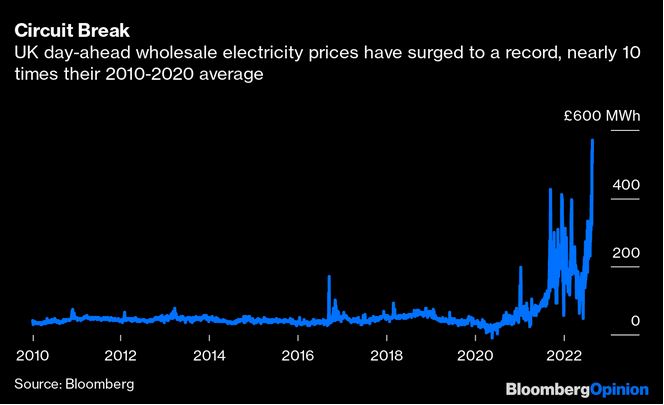 |
Sentera Announces Increased Availability of 6X Sensors
Science-grade multispectral sensor captures more data to help advance research.
See globalagtechinitiative.com
How Soil Health Can Reduce Farm Costs
Here are 5 critical ways to improve your soil health and reduce farm costs.
See globalagtechinitiative.com
Agritech Company Cropin Launches Its Cloud Platform to Digitize the Agricultural Industry
Cropin Cloud aims to advance how technology can solve critical planet-scale challenges such as food security and climate-resilient agriculture.
See globalagtechinitiative.com
US retail summer sales have recovered
| 02 - 15/09/22 | 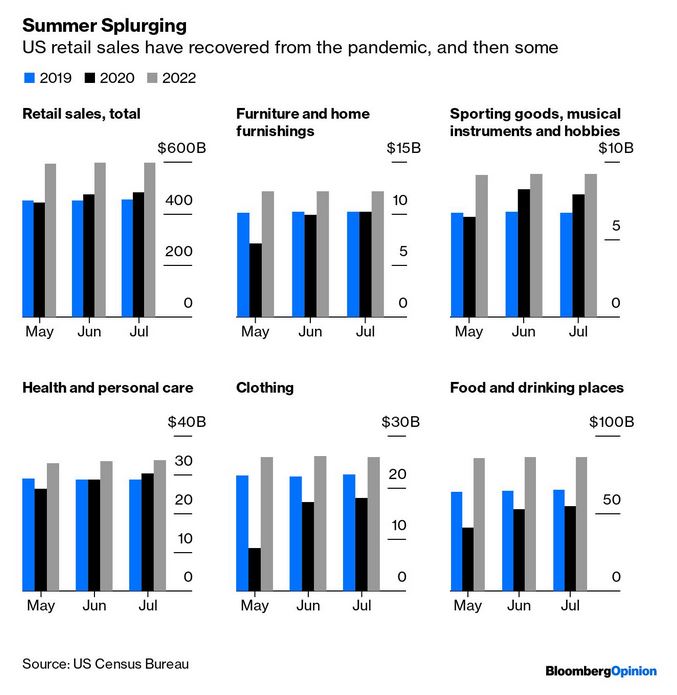 |
How to cut grocery bills?
| 03 - 15/09/22 | 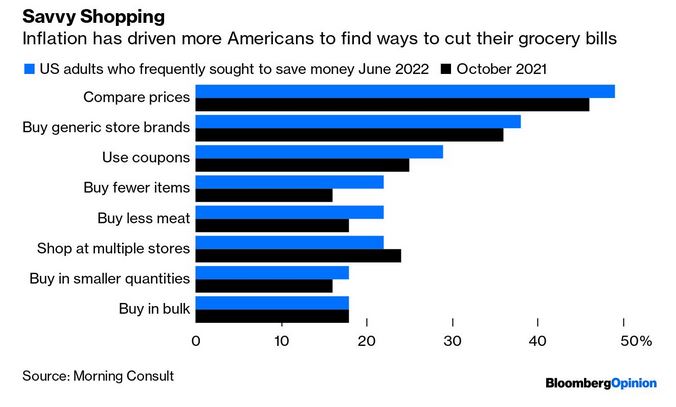 |
Germany and France are among the most egalitarian countries
| 04
- 15/09/22 See theguardian.com |
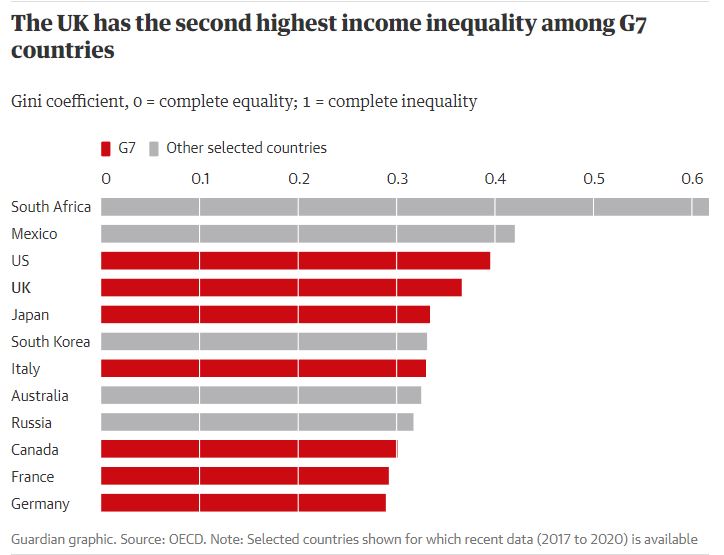 |
FutureFarming.com
> Case IH and Raven develop world’s first autonomous spreader
Case IH and Raven Industries introduce the agriculture industry’s first autonomous spreader: the Case IH Trident 5550 applicator with Raven Autonomy. Unveiled at Farm Progress Show 2022, this innovative solution is to deliver on customers’ demands for autonomous equipment to help solve labor challenges and increase productivity on their operations.
> CHCNAV Opens Dealership Opportunities to Precision Ag Professionals
CHC Navigation opens dealership opportunities to precision farming professionals worldwide. Be our dealers in your region and grow your precision farming business with the affordable automated steering retrofit kits for tractors.
> Trimble extends selective spraying tech with acquisition of Bilberry
Trimble has acquired Bilberry, a French technology company specializing in selective spraying systems for sustainable farming. Bilberry applies artificial intelligence (AI) technology that identifies a wide variety of weed species in real time for a broad range of crop types.
> Field Robots (video): Robot tractor AgBot shows tricks on bulb field
On the 17th of August, bulb grower Henk Verdegaal finally had the opportunity to see what a robot tractor can do for his company. An AgBot from AgXeed driving a (bio) tiller and spading machine was used for this occasion.
> Management tools: GHX Mobile app helps farmers manage fields
GHX by Golden Harvest announched the launch of GHX mobile, an online tool and app that is to “put the future of seed sales in the farmer's hands. GHX Mobile includes field scouting recommendations, yield tracking and predictions, weather and markets.
> Crop Science: Better photosynthesis increases yields in food crops, research shows
A collaborative team led by the University of Illinois has transgenically altered soybean plants to increase the efficiency of photosynthesis, resulting in greater yields without loss of quality.
> Market trends: Precision harvesting market to grow to USD 22.4 billion by 2027
Increasing adoption of harvesting robots and autonomous combine harvesters, increasing labour costs and increasing mechanization of farms in emerging countries are driving the growth of the market.
> Radish harvesting robot saves growers up to 50% in costs
Dutch company Koppert Machines has developed a new fully automatic radish harvesting robot. The harvesting and radish bunching machine is for outdoor use in the field and can save growers up to 50% in costs.
> Sustainability: Harvesting crops – and sunlight
Can large-scale, on-farm solar power help solve global energy and food crisis? Large-scale incorporation of solar panel systems into working farms could simultaneously support more cost-effective and bountiful food production, negate agriculture’s carbon footprint, and better ready the rural landscape for economies without fossil fuels.
> Harvesting: John Deere HarvestLab 3000 available on combines for analysis of grain and rapeseed
John Deere HarvestLab 3000 is now available on the S and T-Series combines, expanding the use of near-infrared sensor to four applications by enabling constituent analysis for grain and rapeseed.
> Market trends: Precision farming market across Europe to contribute a quarter of global market revenue
The global precision farming market is to reach US$ 20.36 Bn by 2032. The scarcity of resources, along with unpredictable weather patterns, is driving greater demand for precision farming equipment, according to a Fact.MR analyst.
> Crop health:
Biosensor detects hidden rot in potatoes
Researchers have developed a sensor that detects rot in potatoes and inhibits the disease from growing and spreading to other plants.
> A call to those who want to sell field robots in 2023
Future Farming is on a quest to update and complete its buyers guides of field robots 2023. Do you manufacture or know any of these robots? Then let us know and sign up for the one and only global field robot buying guide 2023.
> Crop spraying robots: Jacto offers spraying robot on rental basis for 6 US$ per hectare
Jacto has presented its business plan for the Arbus 4000 JAV crop spraying robot, which is currently available only in Brazil. The company offers the robot sprayer for 6 U.S. dollar per hectare on a rental basis.
> Precision spraying: New Holland upgrades Guardian front boom sprayers with Raven precision tech
The New Holland Guardian front boom sprayers now come equipped with Raven solutions that increase application efficiency, including Slingshot and VSN Visual Guidance technologies.
> Sustainability: The benefits of returning cotton textile waste to fields
An Australian trial on a cotton farm has shown it was safe to put large amounts of cotton textile waste into the soil, with no harm done to soil health or cotton yields. It could offer benefits to soil health.
> Irrigation: FAO tool to help farmers optimise irrigation systems and achieve higher yields
The Food and Agriculture Organisation of the United Nations (FAO) has developed a portal, known as WaPOR – Water Productivity through Open Access of Remotely sensed derived data. WaPOR processes satellite data to provide information that can help farmers optimise irrigation systems and achieve higher, more reliable agricultural yields.
See futurefarming.com
Contadine alla vendemmia, 1895, de Francesco Gioli (1846-1922)
| 06 - 15/09/22 |  |
USDA awards nearly $3 billion for climate-smart ag projects, Successful Farming, By Cassidy Walter, 9/14/2022
Today the USDA is set to announce $2.8 billion in cost-share grants for 70 projects aimed at reducing American agriculture’s carbon footprint.
The initiative, Partnerships for Climate-Smart Commodities, was announced earlier this year with $1 billion in funding available. The agency says the application response was so overwhelming they worked to make more than $3 billion available through the Commodity Credit Corporation.
“USDA is delivering on our promise to build and expand these market opportunities for American agriculture and be global leaders in climate-smart agricultural production,” USDA Secretary of Agriculture Tom Vilsack says. “This effort will increase the competitive advantage of U.S. agriculture both domestically and internationally, build wealth that stays in rural communities, and support a diverse range of producers and operation types.”
The agency received 450 applications for the first round. Project proposals requested anywhere from $5 million to $100 million. The second round of awards will be later this fall, and USDA will have 600 applications to sort through for grants ranging from $250,000 to $4.9 million.
“The breadth of this effort is pretty significant, and I think it is a testament to the desire of [American agriculture] to be part of the solution,” Vilsack says.
.../…
See agriculture.com
Rye Harvest, 1905, by Carl Larsson (1853-1919, Suède)
| 07 - 15/09/22 |  |
The Production Board invests $100m in Brazilian SPAC deal to promote agtech adoption, AFN, by Louisa Burwood-Taylor
…/…
On the flip side, other agtech tools and services are far less entrenched in Brazil compared to the US, including digital ag and precision farming. Variable rate technology, which allows farmers to vary the type and amount of seed throughout a field, as well as precisely deliver fertilizers, is used on an impressive 78% of the US row crop farms but only on 10% of those in Brazil, for example. That creates a lot of room for growth in the region for digital agtech companies, and it also provides a way for TPB to add value to its new partner by helping to bring digital tools to its farmers.
“Brazilian retailers need additional, higher-value services models including soil testing, digital agronomy, and more,” Friedberg said.
Equipped with such tools and services, Latin America — the largest ag export region in the world — has a huge role to play in the future of our food system.
“The Latin American region represents the biggest opportunity to improve outcomes in terms of global calorie production and food security,” Friedberg said on the investor call.
That Friedberg, a veteran of the agtech space, feels he needs to make such a significant investment in an ag retailer speaks volumes to the challenges agtech entrepreneurs have faced in getting their innovations adopted. By partnering with Lavoro, TPB is hoping to drive more agtech adoption by leveraging the retailer’s influence on farmers.
“Ag retailers are the lynchpin of the industry and their agronomists spend a lot of time with farmers to help them get better outcomes in the field,” said Friedberg.
See agfundernews.com
Rising Sun
| 05 - 15/09/22 | 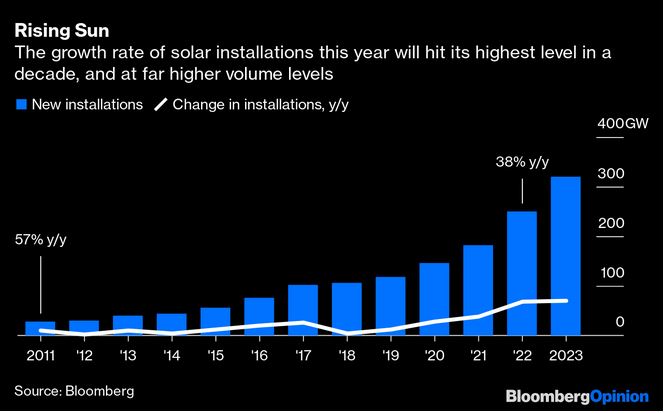 |
Brief: Brazil, US can expect a ‘healthier supply’ of fertilizers than last year, says Rabobank, AFN, by Jennifer Marston
Key commodity growing markets in the Americas, particularly Brazil and the US, can expect a “healthier supply” of fertilizers than last year, according to the latest Rabobank North American Agribusiness Review.
Growers may also see “further downward price pressure” on phosphates and potash, as the market adjusts to the Russia-Ukraine conflict; Russian potash and phosphate are “flowing out more fluidly” and domestic intermediaries are “comfortable enough” on supply.
News is a little less optimistic for nitrogen, with base case forecasts predicting a 20% to 30% price increase at the wholesale level between now and the end of the year.
A “potentially double-digit percentage increase” is expected for seed pricing heading into 2023.
See agfundernews.com
Public Jobs Crisis
| 06 - 15/09/22 | 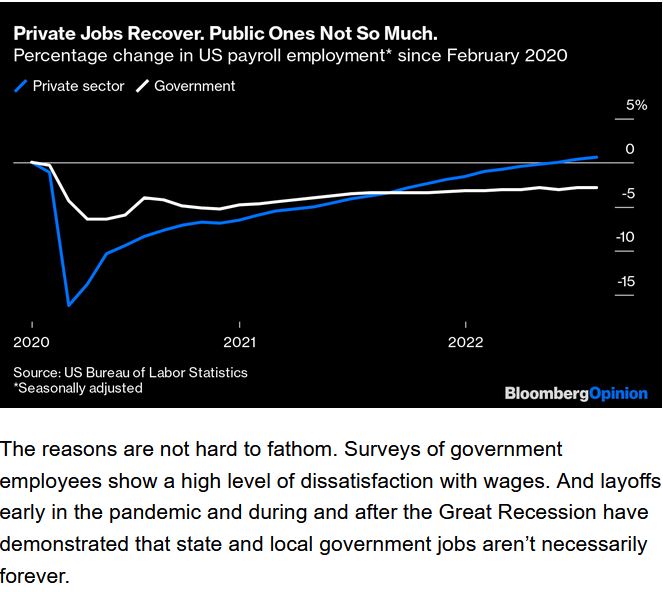 |
How Kenya’s Neruva Technologies’ ecocapsules are bringing food production to urban markets, Lucy Ngige, September 14, 2022
As with most global cities, consumers in Kenya’s capital of Nairobi eat food predominantly sourced from semi-urban or rural locations, which are more abundant in farmland.
As soon as food travels, challenges arise, centered around maintaining produce freshness. For food that needs to travel long distances, countries need sufficient cold chain infrastructure to protect food along its route. This can be expensive, involve many middlemen, and ultimately make food more expensive for those consumers at the end of the chain, in the cities.
In Kenya, there’s another factor weighing on those logistical challenges: food production stagnation. Currently food supply from within the country is not meeting demand. Around 20 million people living in parts of the Horn of Africa, that is in Kenya, Ethiopia and Somalia are said to be severely food insecure. Further, 3.1 million people in Kenya’s arid and semi-arid regions are facing acute food insecurity.
A clear example is the demand for fish. Last year, news that Kenya was facing a shortage of fish rocked headlines. The country could face a deficit of around 360 million kilograms of fish by 2025. Currently, the country’s demand for fish is supplemented by cheaper imports from China which the government refused to ban, citing fish shortages. Now, the cost of China’s fish imports has increased 10% over last year, reaching a whooping Ksh2.47 billion. ($20.5 million) and a market share of 83%.
To try and mitigate these challenges, Kevin Bett, a financial engineer passionate about agriculture, started Neruva Technologies with two co-founders.
.../...
See agfundernews.com/
Unfilled poistions in the US public sector (we have he same pb in France...)
| 07 - 15/09/22 |  |
Good News: Cooperation Among Strangers Has Increased for the Past 60 Years
Despite widespread worries that the social fabric is disintegrating, data from the American Psychological Association shows that since the 1950s, cooperation between strangers has steadily increased in the United States.
“We were surprised by our findings that Americans became more cooperative over the last six decades because many people believe U.S. society is becoming less socially connected, less trusting, and less committed to the common good,” said lead researcher Yu Kou, Ph.D., a professor of social psychology at Beijing Normal University. “Greater cooperation within and between societies may help us tackle global challenges, such as responses to pandemics, climate change, and immigrant crises.”
.../...
See scitechdaily.com
Regenerative agriculture conference faces protests in Amsterdam, AFN, by Louisa Burwood-Taylor
- The Regenerative Agriculture and Food Systems Summit in The Netherlands faced protests and accusations of greenwashing on its opening day in Amsterdam this week.
- Attendees were momentarily unable to enter the conference in Wednesday as protestors “glued themselves to the entrance” of the Krasnapolsky Hotel in Dam Square, one attendee told AFN.
- Protestors took issue with some of the event’s key sponsors, which included global food business Nestle, fertilizer and ag inputs company Yara, and global agribusiness company Syngenta, among others. Protesters issued a statement saying: “These companies pretend to lead the transition to a more resilient and equitable food system, but they are primarily at the root of our interconnected social, climate, environmental and health crisis.”
- Extinction Rebellion was one of the groups involved and said that the summit provided a platform for multinationals to “deliberate how they can further greenwash their polluting and neocolonial practices,” according to Natural News Desk.
…/…
See agfundernews.com
European Soil Data Centre Newsletter No.143 (July 2022)
See esdac.jrc.ec.europa.eu
10 Benefits of Soil Health for Farmers
From reducing on-farm costs to restoring ecosystem services like air and water quality, soil functionality is the catalyst to optimal crop yields.
See globalagtechinitiative.com
All fishes are not the same
| 08 - 15/09/22 | 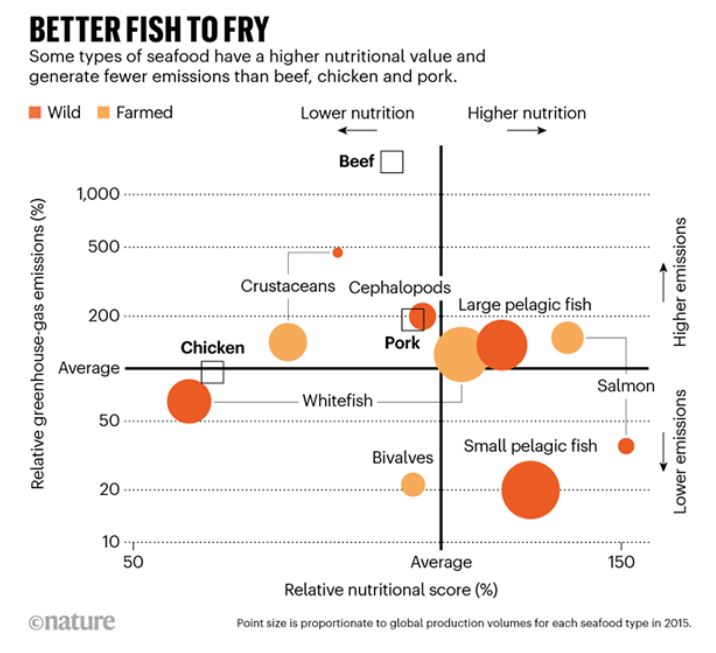 |
Linking deaths to red meat ‘appears implausible (The Lancet)
In 2020, the Global Burden of Disease Study (GBD) 2019 was published in The Lancet. According to its findings, a ‘substantial’ increase in diet-related burden was observed, which the authors associated with red meat intake.
In the GBD 2017 analysis, 25,000 deaths and 1.3 million disability-adjusted life years (DALYs) were attributed to diets high in red meat. Red meat intake was amongst the least important of 15 dietary risk factors.
However, by GBD 2019, estimates of deaths attributable to unprocessed red meat intake had increased 36-fold, with estimates of DALYs attributable to unprocessed red meat intake up 18-fold.
Two years on since GBD 2019 was published, a team of international researchers are questioning these findings, citing ‘serious concerns’ about the most recent GBD systematic analysis of risk factors.
.../...
See agricultureportal.co.za
Q&A: LahakX on how drones can make crop scouting ‘truly actionable’ for farmers, AFN, by Jennifer Marston
Regulatory hurdles have always been significant for drone companies, including those in the agricultural sector dispensing pesticides and other crop protection substances. At the same time, these technologies are capable of helping farms transition from the ‘spray-and-pray” approach to far more targeted applications, which would ultimately help farm operations cut costs.
It’s a major milestone, then, for LahakX, a California-based startup offering drone swarming and spot-spraying services to farms, to have recently completed its Federal Aviation Administration (FAA) regulatory requirements.
LahakX’s proprietary technologies enable spot-spraying via drones and autonomous drone swarming to boost performance in the field.
Completing the regulatory process has taken the company two years, and CEO and co-founder Eylon Sorek tells AFN that LahakX is now ready to take its drones to the field in Monterey County, California, where it will service leafy greens and strawberries.
‘The last barrier to ramp up the company to full-scale commercial work is in our hands,’ he says of the FAA milestone. ‘We have the team in place, we have the product in place and the pipeline. Now we also have the final thing that is enabling us to work commercially.’
Below, Sorek (ES) discusses his company’s backstory, some of the challenges along the way, and how he sees both the regulatory landscape and the market opportunity for drones in agriculture evolving over the next few years.
.../...
See agfundernews.com
Le réveil du faucheur de Leon Augustin Lhermitte, 1844-1925
| 09- 15/09/22 |  |
A first thought for today
Genius is the gold in the mine, talent is the miner who works and brings it out.
Marguerite GARDINER, writer (1789-1849)
A second thought for today
The greatest sign of success for a teacher is to be able to say, "The children are now working as if I did not exist."
Maria MONTESSORI, educator (1870-1952)
A third thought for today
The decent moderation of today will be the least of human things tomorrow. At the time of the Spanish Inquisition, the opinion of good sense and of the good medium was certainly that people ought not to burn too large a number of heretics; extreme and unreasonable opinion obviously demanded that they should burn none at all.
Maurice MAETERLINCK, poet, dramatist, and Nobel laureate (1862-1949)
|
Gazette
de vitisphere.com, |
How to rebuild Ukraine’s science
With countries around the world increasingly focusing on problems at home, the urgent need to reconstruct Ukraine’s research and educational infrastructure must not be forgotten, argues a Nature editorial.
The good news is that plans are being made: in June, the leaders of the science academies of Ukraine, the United States and a number of European countries agreed some outline steps for continued science collaboration.
At an international conference on reconstruction for Ukraine, held in July in Lugano, Switzerland, many governments committed to a set of principles (the Lugano Principles) on how they would approach rebuilding the country.
But winter is coming in the Northern Hemisphere, and it will put further strain on international resolve. “It is a test we cannot fail,” says the editorial.
See nature.com
50 States, 50 Start-ups: How Innovation Surged During Covid
As America locked down during the global pandemic, these small businesses unlocked a new level of ingenuity.
The devastating toll of the pandemic is all too clear on our families, our cities, our nation. But we are now beginning to see an underappreciated side of the pandemic: a coast-to-coast surge in American ingenuity, drive and determination.
Even as the pandemic damaged or even destroyed many businesses, it also provided new opportunities and fostered creativity in unexpected ways. For some, it meant a recalibration of life priorities. For others, it provided the gift of time and attention to start something new or follow through on long-deferred dreams. More new businesses were created in 2020 than any other year on record, and 2021 wasn’t far behind. The one-year survival rate of those new companies topped 80% in 2021 for the first time since 1999, according to the Kauffman Indicators of Entrepreneurship.
We reached out to new business owners in every state of the country to hear their stories of creation, survival and success. The pandemic required these people to adapt their businesses to new economic realities, from making and branding their products to reaching customers. We’ve selected one new company to represent the innovation we found in each of the 50 US states, highlighting 12 to showcase the mixture of inspiration and perseverance needed to start a new enterprise in the midst of a pandemic.
Find out which startup in your state made it into our national guide to pandemic innovation.
See bloomberg.com
Farming Matters: Science will be the critical challenge for those in politics, by Paul Temple, 1 Aug 2022
As a rural resident, I know well that the countryside offers an exceptional quality of life, with a unique appeal to businesses, residents and visitors alike.
.../...
Finally, there are the concerns that the market place will not accept new breeding technology.
No farmer wants to grow something they feel cannot be marketed.
But the global market would certainly demonstrate this is not an issue. The hypocrisy of EU regulation has been an issue and we now have a real opportunity to move on.
The key element to this is choice on both sides and gene editing is far simpler when it comes to labelling or requiring no change to current practice.
Following the science will be the critical challenge for those involved in politics, ensuring the Bill is enabling and that the opportunities of new science can be taken. It will be a real demonstration of ambition.
If they get it right, the UK will be able to build on its already strong science base and attract both people and investment into the UK for the benefit of farmers, consumers and the environment.
See fginsight.com
Mitigation or adaptation to climate change?
| 09 - 15/09/22 | 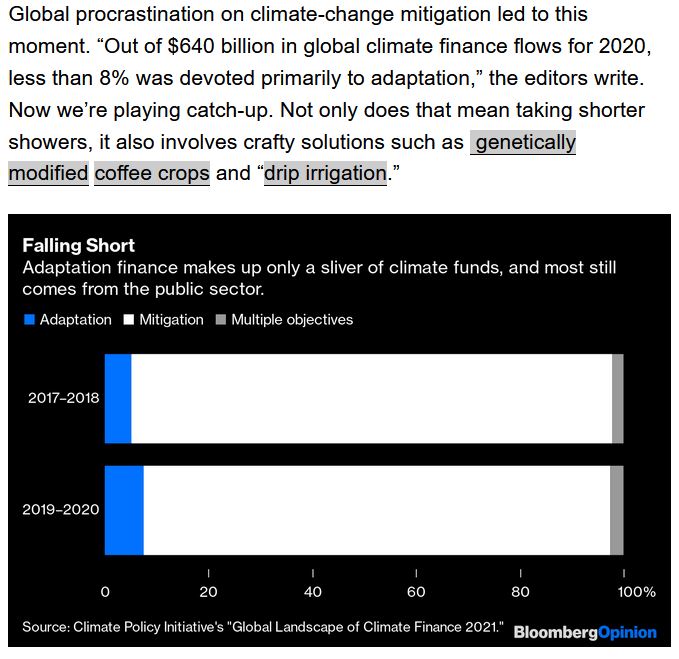 |
2022 Recipient Norman Borlaug Field Award: Dr. Mahalingam Govindaraj, INDIA
As a scientist at the International Crops Research Institute for the Semi-Arid Tropics (ICRISAT) starting in 2011, Govindaraj defined a strategy for biofortification of pearl millet with high iron and zinc content and dissemination of these high-yielding, drought-tolerant varieties to farmers. Biofortification is the process of increasing the micronutrient content of a crop through selective breeding, and has become a keystone strategy for reducing vitamin and mineral deficiencies in low- and middle-income countries. Pearl millet is a climate-resilient staple food crop that grows in dry regions on marginally productive land, and as such is most often cultivated by smallholder farmers and accessible to those with low income. Having come from a farming background, Govindaraj saw that biofortification of pearl millet could have a strong positive impact on the nutrition and health of rural communities.
In 2014, Govindaraj released Dhanashakti, the world’s first biofortified pearl millet. Independent clinical studies showed that 200 grams of Dhanashakti provided women with more than 80 percent of their recommended daily allowance of iron, compared to only 20 percent in regular pearl millet varieties. Now, more than 120,000 farming households in India grow Dhanashakti. Estimates say that by 2024, ten years after Dhanashakti’s release, more than 9 million people in India will be consuming iron- and zinc-rich pearl millet and reaping the health benefits of better nutrition.
Govindaraj’s active collaboration with the Indian Council of Agricultural Research led to India becoming the first country in the world to commit to iron and zinc standards as core traits in their national cultivar release policy. Pearl millet became the first crop in which minimum levels of these essential micronutrients were mandated in 2018. As it is estimated that India loses over US$ 12 billion in GDP annually to micronutrient deficiencies, this was an important policy milestone in advancing a nutrition-sensitive food system.
See worldfoodprize.org
Disease-resistant GM cassava promises to be game-changer for Kenya, by Joseph Maina, August 15, 2022
“Cassava is an important food crop, but we can also use it to industrialize in Kenya,” Miano asserted. “However, we have not yet been able to achieve this as a country.”
Miano identified starch as a potential cassava product that the country can leverage to advance its industrial growth. It is also projected that the improved cassava can protect farmers from devastating losses of this important food crop and contribute to the creation of thousands of jobs along the value chain due to the crop’s use as animal feed.
The scientists note that modern biotechnology is by far the best option to incorporate CBSD resistance in cassava cultivars carrying farmer-preferred characteristics. Similar approaches have been used to confer resistance to plant viruses and have been authorized by regulatory bodies around the world, including virus-resistant pawpaw, squash and beans.
See allianceforscience.cornell.edu
U.S. Population Growth Has Nearly Flatlined
| 10 - 15/09/22 | 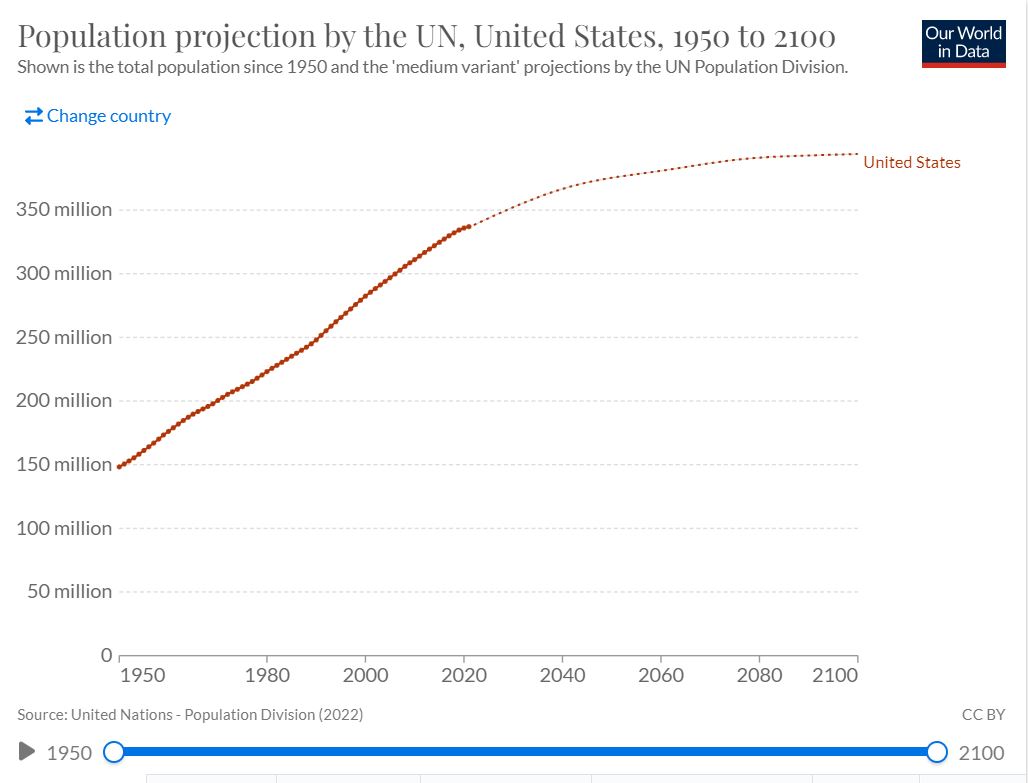 |
US life expectancy declines again
Babies born in the United States this year have a life expectancy 76.1 years — the lowest since 1996. The second consecutive year of decline is driven by COVID-19, drug overdoses and fatal accidents. American Indian and Alaskan Native people have been particularly hard hit: their life expectancy is 65.2 years.
The numbers are in contrast to other high-income countries, where the impact of COVID-19 on death rates is diminishing. “Even small declines in life expectancy of a tenth or two-tenths of a year mean that on a population level, a lot more people are dying prematurely than they really should be,” says Robert Anderson, a specialist in mortality statistics.
See NYT
La récolte des foins, de Julien Dupré
| 09- 15/09/22 |  |
Africa explores nuclear energy as climate-friendly way to ease power shortfalls, by Joseph Maina, August 8, 2022
Although South Africa is the only African country producing nuclear power commercially, other governments on the continent are exploring nuclear energy as a climate-friendly alternative to fossil fuels.
At least another 10 African countries were considering nuclear power as of 2018, according to the International Atomic Energy Agency (IAEA), the organization that promotes the peaceful use of nuclear energy. Besides the potential to generate electricity, nuclear technology is seen as a way to address food security and other development challenges in the continent of 1.2 billion people.
More pointedly, in recent times a growing number of African countries have shown interest in developing nuclear power programs to augment existing power shortfalls.
.../...
See allianceforscience.cornell.edu
Media must address ‘false balance’ in biotech coverage, by Gordon Davidson, 20th August 2022
A Yorkshire arable farmer who took part in the UK Government’s genetically modified crop Farm-Scale Evaluations over 20 years ago has criticised the BBC for 'failing to respect the science' in its coverage of genetic engineering in food and agriculture.
Phil Lodge, who farms on the outskirts of Doncaster, explained his reasons for taking part in the GM crop trials: “Having visited Manitoba and Saskatchewan in Canada in the 1990’s both pre- and post-adoption of GM canola, I was interested in the technology’s potential here in Britain.
"The economic and environmental benefits were clear. Scott Day, a pioneering Manitoba zero-till farmer, clocked 600 tractor hours/year pre-GM and 150 tractor hours/year with GM and zero-till, saving oceans of fuel on prairies and delivering benefits for soil conservation and wildlife.
“The Canadian experience has been replicated around the world. Millions of farmers, in both developed and developing countries, are choosing GM technology because it works. GM crops are supporting major economic and environmental benefits in terms of increased yields, fewer pesticide sprays, less soil erosion and reduced greenhouse gas emissions,” he said.
.../...
“How long it will take before the global weight of scientific evidence behind the safety and efficacy of GM crops finally seeps into the consciousness of BBC journalists, editors and producers?”
See thescottishfarmer.co.uk
La récolte des foins de Julien Dupré
| 10 - 15/09/22 |  |
Chuck Norris jokes (2+3)
21. Someone once asked Chuck Norris if he was willing to sell his pee as a canned beverage. That beverage is known as Red Bull.
22. Chuck Norris was once bitten by a cobra. After five days of excruciating pain, the cobra died.
23. Chuck Norris does not sleep. He waits. He is always waiting.
24. Right after inventing the phone, Alexander Graham Bell got two missed calls… from Chuck Norris.
25. Chuck Norris’s tears can cure cancer. The problem is, he has never cried.
26. A mathematician said it was impossible to count to infinity. Chuck Norris then counted to infinity… Twice.
27. Chuck Norris doesn’t take exams. He submits to no one.
28. The dinosaurs made the mistake of looking at Chuck Norris in a way he did not like. They never made the same mistake again.
29. Normal people tell ghost stories at the campfire, ghosts tell Chuck Norris stories.
30. Chuck Norris can speak all languages… even braille.
31. When Chuck Norris crosses the road, vehicles look both ways.
32. When Chuck Norris peels onions, the onions cry.
33. Chuck Norris can kill two stones… with one bird.
34. Chuck Norris once shot down an enemy plane with his finger. He pointed it at it and yelled: “Bang!”
35. Chuck Norris does not use a spellchecker. A spellchecker uses Chuck Norris.
36. Chuck Norris can win a game of connect four… in three moves.
37. Children check their closets for the boogie man every night before going to sleep. The boogie man checks his closet for Chuck Norris.
38. Chuck Norris doesn’t switch the light on, he scares the dark away.
39. Chuck Norris once kicked a horse in the chin. Its descendants are now known as giraffes.
40. Chuck Norris once went to Burger King and ordered a Big Mac. They gave him one.
| |
The distribution of this efita newsletter is sponsored by vitisphere.com
Please, contribute to the content of your efita newsletter, and advertise your events, new publications, new products and new project in this newsletter. Without your support, it will not survive!
Contact: Guy WAKSMAN
E-mail: guy.waksman(a)laposte.net
To read this newsletter on our web site
See Efita
The archives of this newsletter
See Efita
Do not miss the Virus Jokes in English and French
About the EFITA mailing list
You can use the efita moderated list (> 15000 subscribers) to announce any event / product / web site / joke (!) related to IT in agriculture, environment, food industry and rural areas.
If you want to subscribe a friend, please fill in his form.
If you do not wish to receive our messages, please fill in the following form...

